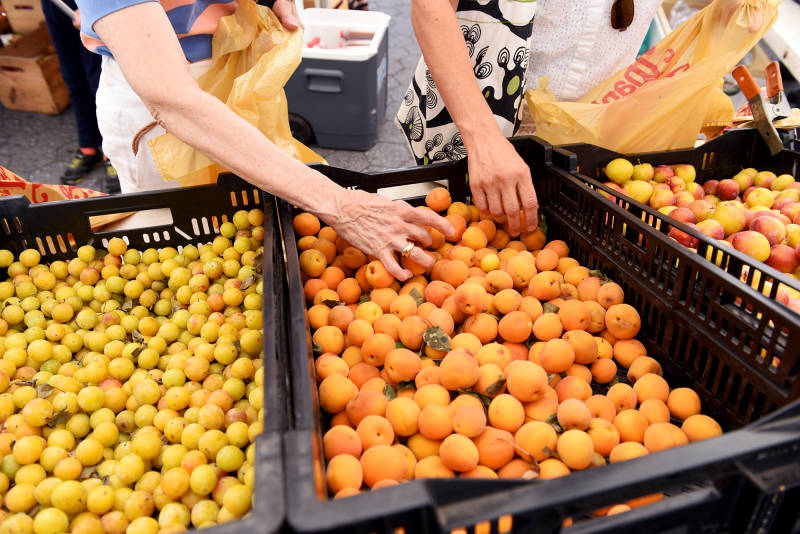Organic food has gone majorly mainstream, right? Wal-Mart has been driving down the price of organic with an in-house organic line. Whole Foods has begun experimenting with cheaper stores to catch up. And the increase in sales of organic food has dramatically outpaced that of conventional food. What's more, 30 percent of shoppers report an interest in paying more for organic food — and a significant interest even in low-income neighborhoods. Given all that, it's easy to assume that organic has become just as common in downmarket groceries as in upscale ones.
But that's not necessarily the case, suggests a recent study in the Journal of Food Products Marketing.
Researchers undertook a painstaking quantification of organic food sales across Manhattan. They visited 1,256 stores, assessing whether each retail location sold organic, local or conventional versions of 24 foods that are among the most common to be sold organically.
What they found surprised them: Stores selling more than a handful of organic products were overwhelmingly concentrated on the Upper East and Upper West sides —neighborhoods that are wealthy and highly educated. Sixty percent of the borough's stores did not offer a single organic item on the list, and one-third offered 12 items or less. Only 5 percent of the stores offered at least half of the 24 items in organic versions.
"I was surprised at how few stores had a good offering of organic products," says study co-author Carolyn Dimitri, a professor at New York University's Food Studies Program. "I thought organic food was everywhere ... but when you take a look, [organic food] does seem to be concentrated in a few select neighborhoods, rather than the wide availability that was implied by the industry."
